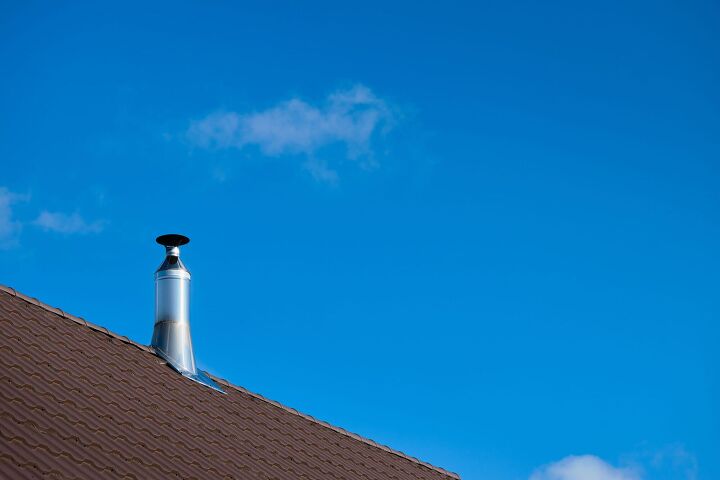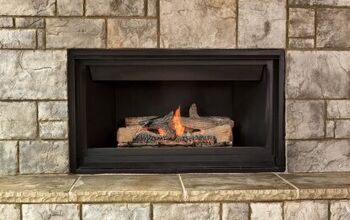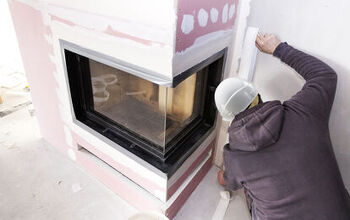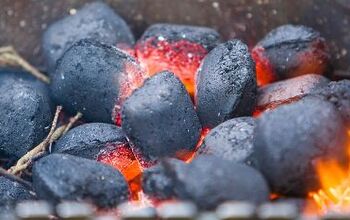Can You Close The Flue On A Gas Fireplace? (Find Out Now!)

Nothing quite compares to the cozy, warm glow of a fireplace on a chilly, winter evening. However, when you own a gas fireplace, there are some noteworthy differences from ordinary wood fireplaces or even pellet stoves. It’s important that you have a good understanding of the safety procedures with these appliances. One of the most critical components is to understand the proper use of a gas fireplace flue. You may find yourself wondering: “Can you close the flue on a gas fireplace?”
We’ve determined that the flue on a gas fireplace should stay open whenever the fireplace is in use or when the pilot light is on. If the flue were to be closed in either situation, there are severe safety concerns that could arise – including a greater risk of carbon monoxide poisoning or a structure fire caused by a buildup of toxins produced by the natural gas or propane burners.
In other words, the only time that the flue on a gas fireplace can be closed is when you don’t plan on using your fireplace for an extended period of time. For example, if summer is approaching and you don’t need your gas fireplace anymore, it is safe to close the flue.
Now you understand the importance of leaving the flue open, but where is the flue located and how do you work it? Continue reading as we delve into the function of the flue and damper on a gas fireplace, so you can have a better understanding of safe practices with these home appliances.
Do You Need Brick or Stone Fireplace Installation?
Get free, zero-commitment quotes from pro contractors near you.

What is a Gas Fireplace Flue?
Among the numerous component that make up a gas fireplace, the flue is essentially a chimney, ductwork, or pipe that provides a pathway for gasses to escape without the fireplace losing heat. The flue damper can be found inside the flue, resembling a metal flap. A long, thin piece of metal is attached to it, known as the lever. On the other side of the lever is a handle that can be used for closing or opening the flue damper.
The handle is metal, appears like a long thin bar, has a hole drilled on the end, and no protective coating. There are zigzag-shaped notches cut out along the top of the lever that are designed to catch on the edge of the flue, locking the damper in position. Ultimately, the main purpose of the damper is to control how much smoke escapes out of the chimney and the amount of heat that remains in the room.
How Do You Open or Close a Fireplace Flue?
Opening and closing a gas fireplace flue is a relatively simple process. Before you turn on the gas logs, it’s important that you always check that the flue is open. Opening the flue prior to lighting the fire is mostly for safety, as you risk burning yourself on the metal handle if you try to adjust the damper once the logs ignite.
The flue damper handle or lever should be clearly marked to indicate whether it’s “open” or “closed.” If it isn’t marked, most levers must be pushed away from you to open the flue and pulled towards you to close it. Though, there are some modern electric flue dampers let you open or close the flue by pushing a button.
Do All Gas Fireplaces Have a Flue?
Since not all gas fireplaces are the same, not all gas fireplaces have a flue. Though, some will require a flue in order for the appliance to operate safely. There are two main types of gas fireplaces: vented and ventless, or vent-free. In order for a vented gas fireplace to be safely installed in a home, they will need a form of flue.
Vented gas fireplaces may be either direct vent or natural vent. Direct vent gas fireplaces are sealed systems that involve both the air used for combustion and waste air being vented directly to and from the outdoors. The air in a direct vent gas fireplace is entirely separate from the air in a home, meaning they need a flue in order to function.
Natural vent gas fireplaces, also called B-vent, sit inside of masonry fireplaces and use the accompanying chimney to remove waste air from your living spaces. Whether this chimney will have a flue liner or not typically depends on the situation and local requirements.
Ventless gas fireplaces, on the other hand, are designed to burn fuel so cleanly that they are rated for indoor use. As such, they do not need any form of external ventilation, including a flue. Although they don’t require any form of flue for direct venting, your vent-free fireplace may require an external air vent to help keep oxygen supplies at a satisfactory level and adhere to building codes.
When Can I Close My Gas Fireplace Flue?
Generally speaking, if you have a gas fireplace, you should never close the flue when it is in operation. Even if the fireplace is not operating but the pilot light is light, you should still keep your flue open. The reasoning behind this is because when your gas fireplace has access to the fuel source, it can emit hazardous levels of carbon monoxide.
Gas-log fires produce a significant amount of carbon monoxide that must be vented outside in. fail-safe manner. If not properly vented, these levels of carbon monoxide could be fatal. Not to mention, you could have a spark induced structure fire caused by the buildup of emitted toxins. For this reason, it’s important that your gas fireplace damper is outfitted with a keep-open device.
With that said, the only instance when it’s safe to close your fireplace flue is when you will not be using your gas fireplace for an extended period of time – such as during the warm summer months. You should also wait until the handle is completely cold to the touch to shut the fireplace flue.
Related Questions
How do you I know if my gas fireplace is vented or vent-free?
A good way to tell if you have a vented or vent-free fireplace is to examine the flames. Turn on the fireplace and if the flames reach above the logs and appear like a traditional wood-burning fireplace, it’s likely vented. Whereas, if the flames are smaller and have a blue cast to them, the fireplace is vent-free.
Can you leave a fireplace flue open overnight?
While you will lose some heat out of your flue when it’s open, it is safe to leave it open overnight. In fact, if the fireplace is in use or the pilot light is still on, you should not be shutting the damper anyways.
Do You Need Brick or Stone Fireplace Installation?
Get free, zero-commitment quotes from pro contractors near you.

Final Thoughts
Gas fireplaces can be a wonderful addition to any home. Not only do they burn cleaner than conventional fireplaces, they are also more energy-efficient and easier to maintain. Though, it’s important that you know how to safely operate a gas fireplace to ensure the longevity of the appliance and the safety of your home and its inhabitants. This includes understanding when it’s safe to close your gas fireplace flue.
Additionally, before the winter season starts, it’s highly recommended that you schedule an inspection for both your gas fireplace and the flue by an experienced professional. Proper gas fireplace maintenance should occur at least once a year. You should also have a carbon monoxide detector installed in your home and make sure that the batteries are fresh.

Jessica considers herself a home improvement and design enthusiast. She grew up surrounded by constant home improvement projects and owes most of what she knows to helping her dad renovate her childhood home. Being a Los Angeles resident, Jessica spends a lot of her time looking for her next DIY project and sharing her love for home design.
More by Jessica Stone


















![How To Reset A Whirlpool Cabrio Washer [In 5 Easy Steps!]](https://cdn-fastly.upgradedhome.com/media/2023/07/31/9076531/how-to-reset-a-whirlpool-cabrio-washer-in-5-easy-steps.jpg?size=350x220)








